Plastic in the Oceans: A 2023 Update
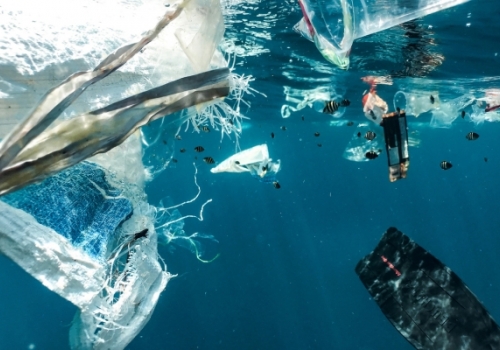
It’s been over a year since I wrote an article for OnboardOnline about plastic pollution and how it negatively affects both ocean life and the environment in general, and is increasingly proven to potentially damage the health of human beings. It has since become an increasingly worrying threat for those of us who enjoy our lives at sea - for superyacht owners who invest hundreds of millions into their vessels, for the crew and guests who benefit from a healthy ocean environment, and for the entire industry that supports and financially benefits from yachting.
In the last few months, even more research data has emerged around how the life cycle of plastic touches every single aspect of our lives at every stage, from its production through to its ‘end-of-use’ decomposition into the oceans, even into the air we breathe and via what we eat and drink.
What has also become more evident according to recent scientific studies is how plastic pollution combined with other toxic elements such as chemicals and black carbon particulates (soot) are having a negative effect on the surface micro layer (SML) of the oceans, which covers 71 per cent of the planet. The SML is between 1 µm and 1000µm deep and is composed of lipids and surfactants produced by marine phytoplankton. Back in the 1950s it was a largely efficient life support system, providing lungs for the planet by regulating atmospheric water vapour pressure, temperature, cloud formation and precipitation.
However a toxic mixture has built up in the SML over many decades which includes degraded plastic particles, and is now adjudged to have declined in its overall climate mitigation efficiency by as much as 50 per cent. The fact is, this toxicity destroys plankton and all forms of marine life.
According to the studies, the SML’s ability to mitigate climate change is just as critical as the net zero target for carbon emissions, and crucially both need to work in harmony to safely limit increasing temperatures and weather disasters. In other words, the carbon net zero targets are most unlikely to be a ‘one size fits all’ solution.
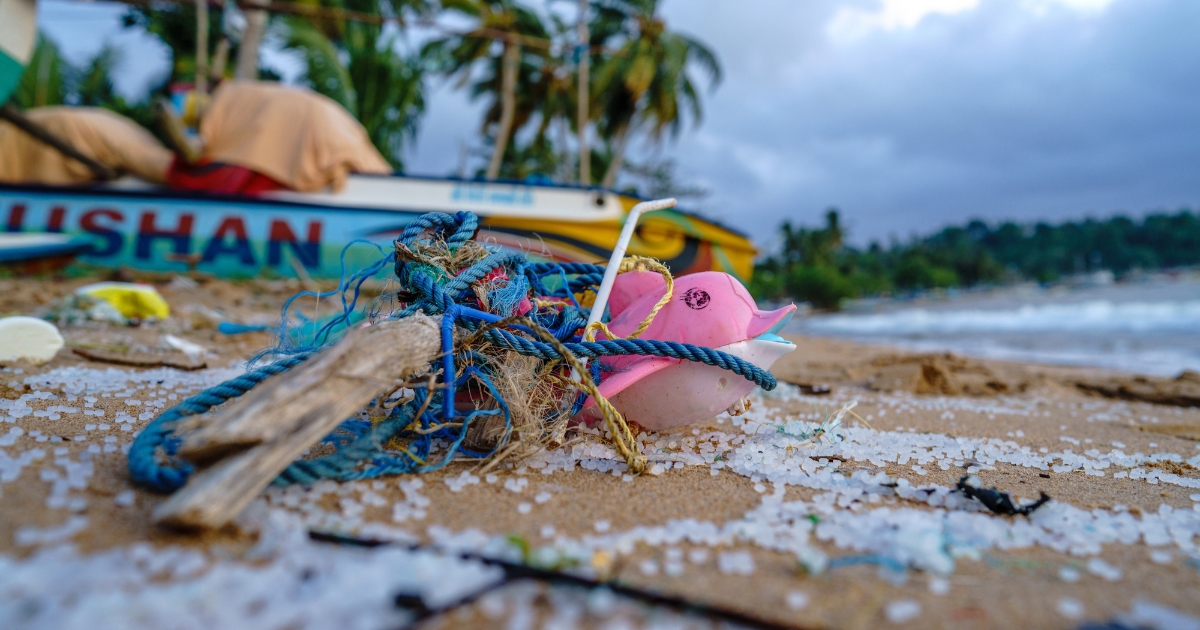
Photo credit: Ocean Image Bank / Soeren Funk
I was already starting to think that it was time I delved into some of this latest research when I received an invitation to attend a webinar on the subject hosted by Woods Hole Oceanographic Institute (WHOI). What triggered this event was the very recent publication of a 215-page report generated by the Minderoo-Monaco Commission which brought together the latest analysis, findings and recommendations on plastic pollution, contributed by 48 leading scientists and researchers from around the world including some from WHOI.
About Minderoo-Monaco Commission
Founded in 2001, The Minderoo Foundation is the now largest philanthropic organisation in Australia with a mission to educate, innovate and drive positive change across a range of community-related projects, from ocean conservation to human rights, slavery and the fight against cancer.
In March last year it established a global collaboration with the Centre Scientifique de Monaco and Boston College which was supported by the Fondation Prince Albert II de Monaco. This coincided with Monaco Ocean Week where the new Commission announced a year-long study into the impacts of plastic pollution on human health and the aquatic environment. Over that period, research data was gathered from internationally-recognised experts in public health, toxicology, medicine, planetary health, and marine science.
By the time the much-awaited UN Global Plastic Pollution Treaty meeting in Paris was convened in June of this year, the study was already published with fully comprehensive explanations about the impacts of plastic pollution on the health of oceans and humans. The report also came with recommendations for critically important changes in chemical and plastic policy, identification of knowledge gaps, and target areas in urgent need of further investigation.
About the Global Plastic Pollution Treaty
Whilst I was researching and writing this article, OnboardOnline published a very detailed overview about the substance of the Treaty, written by an organisation called the SeaCleaners which has a seat at the negotiating table and a long-standing commitment to tackling the problem at source.
Background facts and data about the scourge of plastic
Plastic started out as wonder material. But then again, as did asbestos, which was finally legislated against, phased out and retrospectively removed under strict health and safety regulations when it was medically and scientifically proven to be a serious health threat.
Undoubtably plastic materials have offered huge benefits across a whole spectrum of society, particularly in the food and drinks sector. However the most highly produced plastics are the consumer product single use types which contain, for example, detergents, soft drinks and dairy products. These represent around 40 per cent of all manufactured plastic output with an incredibly short use cycle, before becoming what is being termed as ‘forever waste’.
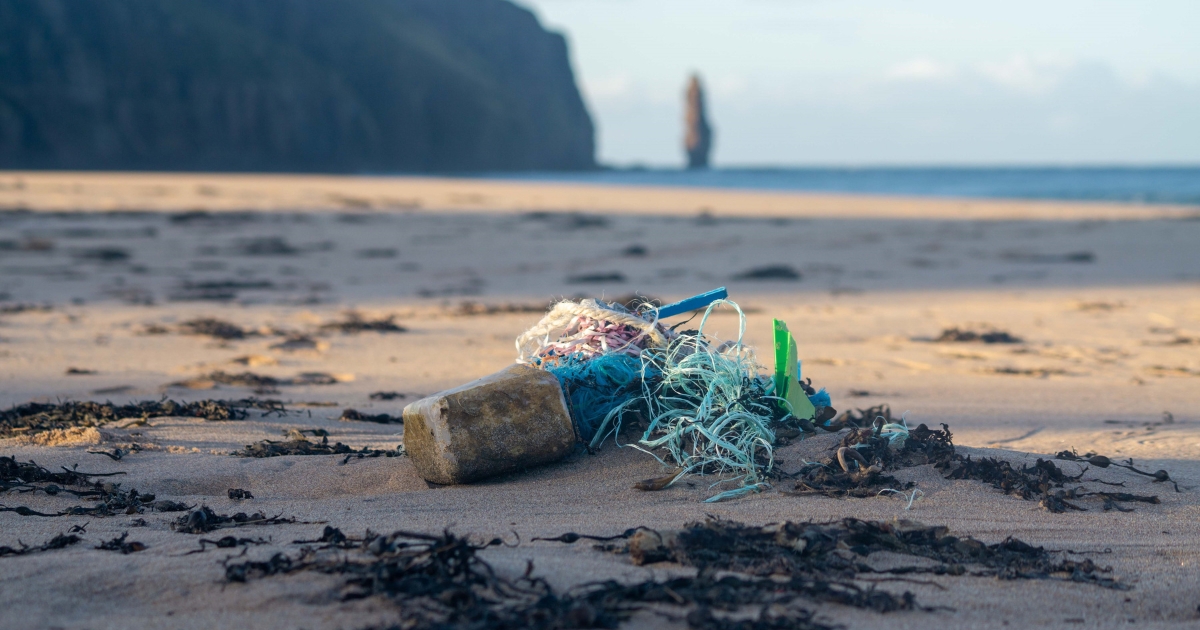
Photo credit: Ocean Image Bank / Thomas Horig
According to the latest information, it’s an unfortunate fact that plastics start to shed their structure along with any toxic elements they contain over their entire existence, starting from when they are manufactured through to their usage and onwards. It has also been confirmed that volumes of micro and nano plastic particles are now by far the largest mass of waste pollutants in the oceans, with the microscopic nano plastics having an immeasurable volume.
During the WHOI webinar, John Stegeman, a bio chemist and toxicologist, mentioned that wide ranging estimates from various sources make it difficult to precisely quantify and confirm how much plastic is actually in the oceans, but at least millions of tonnes are accumulated per year, and hundreds of millions over the decades. Such plastic particles can be so tiny that they can be deposited directly into the oceans from the atmosphere, which also increases the amount that already comes from degradation of plastic articles dumped in the sea.
An overall estimate indicates that the percentage of ocean litter presently made up of plastic is 85 per cent and, unless urgently and strictly reduced, the total volume could triple by 2060. Trying to be precise to the nearest million or so tonnes does not change the incontrovertible facts that (a) it should not be there; (b) it should not be exponentially increasing; (c) more of it = more degradation = more harm to oceans and their inhabitants; (d) the ‘single use plastic tap’ must be urgently turned off.
Environmental and health threats from chemicals in plastics
One of the key drivers for the UN Plastics Treaty negotiations is the emerging scientific evidence related to the unregulated amount of potentially toxic chemicals that are embodied in all types of plastic production. These are said to number around 13,000 types, such as flame retardants, stabilisers, toxic chemicals such as Bisphenol A. They are all utilised in the manufacture of plastics in order to customise them for various applications.
A recent report from the United Nations Environment Programme (UNEP) reconfirmed that such hazardous chemicals can be released and exposed to ecosystems and human health at all stages of the life cycle of plastic, with the study revealing extensive scientific data on the potential adverse impacts of about 7,000 substances associated with plastics. This indicates that more than 3,200 of them have one or more hazardous properties of concern. The conclusion is that chemicals from plastics have been found to be associated with a wide range of acute, chronic, or multi-generational toxic effects, including various types of cancer, genetic mutations, and reproductive disruption.
This latest evidence puts even more pressure on the UN Plastics Treaty to urgently address the plastics crisis by legislating for reductions in plastic production and use. This will also help drive solutions through the design of safer, toxic-free materials that will ideally move us toward a true circular economy.
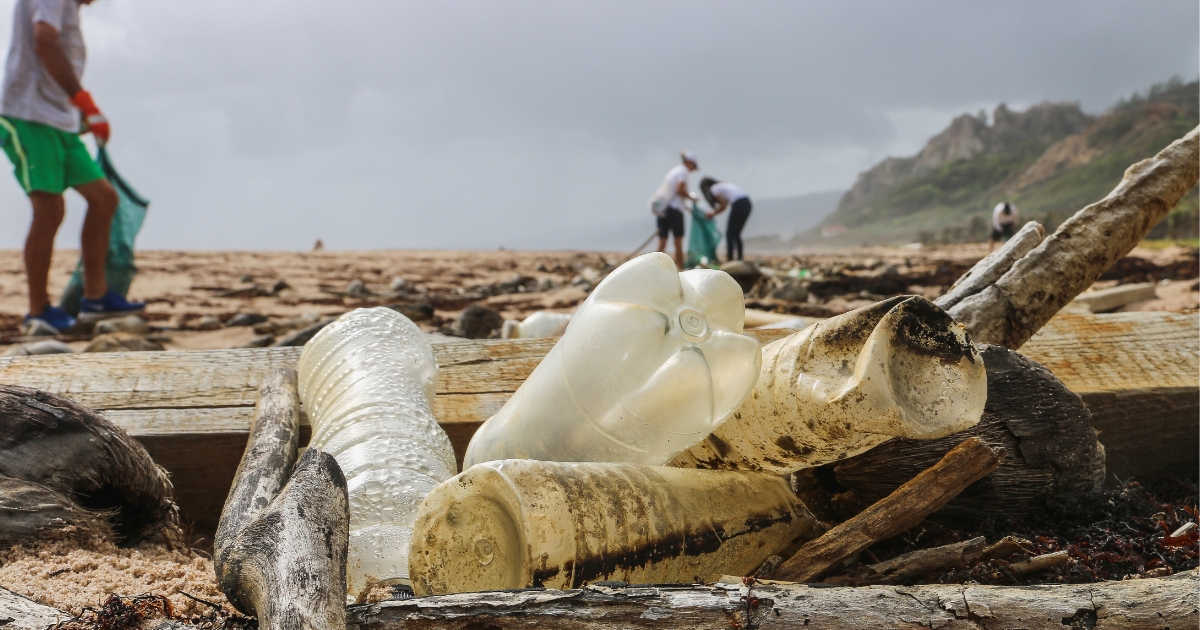
Photo credit: Ocean Image Bank / Brian Yurasits
How plastic pollution affects marine life
Very unfortunately, the accumulation of microplastics in the oceans is going through a constant degradation process, and there is no evidence that they will ever ‘biodegrade.’ Over almost incalculable periods of time they simply continue to break down from larger items (bottles and bags etc.) into micro and nano size particles.
The variation in composition, size, and weight of such particles means that they might float, sink or, eventually, both. In essence this means that the actual spread of macro, micro and nano plastic pollution extends across the entire marine environment, from the surface to the seabed, from rivers to coasts, and to the open oceans. It is even proven to be found in sea ice and sea floor sediments. Absolutely nowhere in the aquatic world is spared!
For many years now we have all seen horrific images of sea creatures harmed by macro plastics such as turtles trapped in plastic bags and nets. However there is more and more evidence emerging of how the smaller degraded plastic particles are negatively impacting and interacting with all forms of aquatic life, and of course actually ending up inside marine animals.
For instance, sea birds are suffering internal lacerations from fragmented plastic particles in a condition known as ‘plasticosis.’ Apparently 100 per cent of sea birds are now affected in some way by the ingestion of plastic.
Tracy Mincer, a microbiologist at WHOI, explains how zooplankton eats plastic as it becomes smaller. This of course is a valuable food source for many marine animals providing energy and nutrients, so the base of the marine food chain is contaminated with plastics and whatever toxins they carry. Also, aquatic microbial life is increasingly attaching itself to ever degrading micro or nano plastic particles as they float or sink in the oceans. Due to this activity the particles become bioluminescent, meaning that they glow in the water at night.
Bioluminescence is a natural wonder which many of us have observed at sea when it sparkles in colours like neon lights. In this case, however, it’s not a natural occurrence but has become highly attractive to visual predators, especially night feeders. Fish and other tiny sea creatures are known to be mistakenly eating large amounts of such plastic, which is then taken into their digestive systems. More scientific research is required to precisely establish how damaging this ingestion is, but you don’t have to be a scientist to understand that it’s an unnatural and undesirable consequence of plastic pollution.
John Stegeman explained how nanoplastic particles are reduced to a size of about 100 nanometres, which is the same size as the Covid virus in human blood cells. Crustacean zooplankton creatures called Copepods, described as the ‘cows of the sea’, will eat these particles, again mistaking them for food. When they defecate, the plastic containing faecal pellets (poo) sink to the bottom of the ocean. Many animals living close to the seabed rely on zooplankton poo for food, so they will also eat plastic.
The overall effect of this unintentional plastic distribution into the seabed is believed to result in the sediments having locked-in plastic for hundreds or even thousands of years. Sea grasses, water plants and phytoplankton are also collecting microplastics, and this is known to be reducing their photosynthesis activity and therefore depleting their oxygen generating capacity.
What can (or is) being done to reduce plastic pollution?
‘Turn off the plastic tap’ has become a well-used and very relevant phrase amongst the anti-plastic campaigning and lobbying organisations. Putting it quite simply, moping the floor while the tap is overflowing is an energy-sapping exercise with no end solution.
The UN Global Plastic Pollution Treaty clearly sets out ways to achieve the ‘turn-off’, and this is very well explained in the recent article by SeaCleaners. The challenge now is to get the major oil producing nations to sign up and agree to the proposed actions.
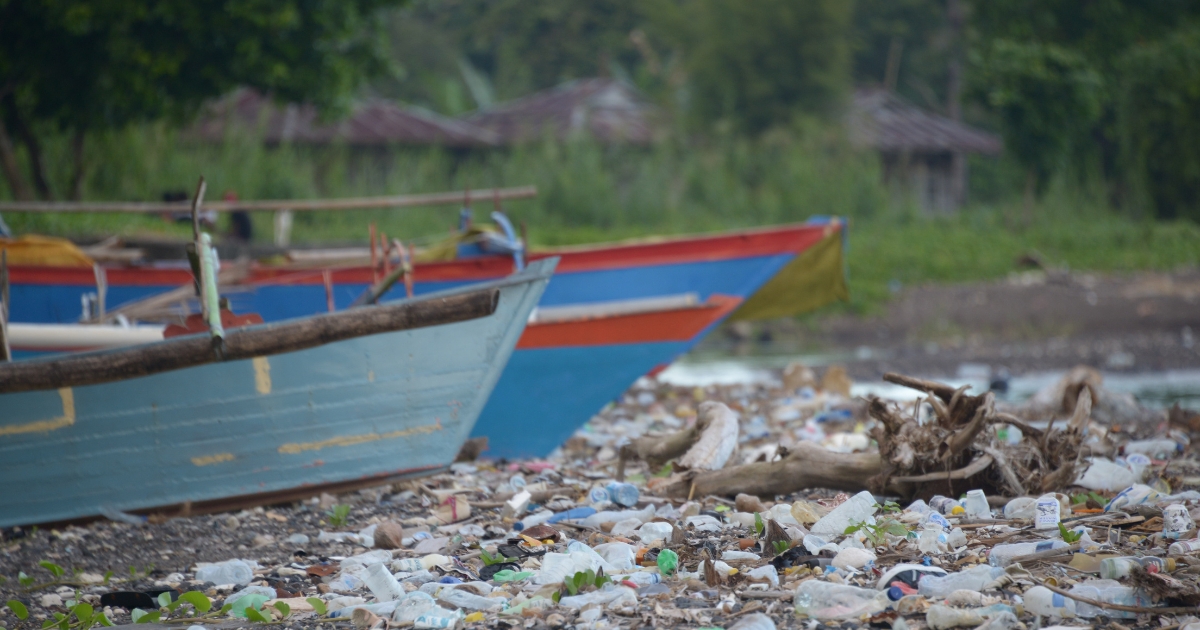
Photo credit: Ocean Image Bank / The Ocean Agency
An infographic from the Boomerang Alliance, an Australian anti-plastic action group, was recently shared by the UN Convention on Biological Diversity. It basically echoes a lot of what has been mentioned above, about how plastic is seriously polluting the oceans. In overview they state that 96 per cent of all marine biodiversity potentially ingests plastic!
It goes on to summarise how ‘four first steps’, if enacted, would eliminate 70 per cent of marine plastic pollution before it enters our oceans:
-
Introduce a container deposit scheme to prevent beverage rubbish from entering the environment.
-
Ban all single use plastic bags.
-
Remove microbeads from personal care and laundry products.
-
Ensure plastic producers and recyclers capture all micro plastics on their own premises.
Ways of reducing ocean plastic before the tap is turned off
The Boomerang infographic also confirms that ocean pollution will double every 11 years if it continues at its present rate, so how about ways of reducing this as much as possible now? When asked in a video presentation, Tracy Mincer said he’s not a big fan of collecting macro plastics with massive trawl nets towed by gas guzzling tugs emitting large amounts of carbon into the atmosphere. “That is kind of counterproductive,” he says. His opinion is that stopping the main source, the floating plastic flow out of rivers into oceans, is a much more productive outcome.
This is exactly what the SeaCleaners is planning to do with its Manta Innovation Project, a custom designed plastic collection vessel which is due to be built and ready for service in 2025. The project was ‘approved for build’ in principle last year by Bureau Veritas classification society, and she would be the first-of-a-kind processing ship designed to collect, treat and repurpose large volumes of floating plastic debris in highly polluted waters along the coasts, in estuaries, and in the mouths of large rivers.
The Manta’s working specification is aimed at collecting 1 to 3 tonnes of plastic waste per hour, from 10 mm in size up to macro items. She will be operational for up to 20 hours a day, 7 days a week, and her first missions will take place around the highly polluted rivers in S E Asia, with the objective of collecting 5 to 10,000 tonnes per year.
Tracy Mincer also mentioned schemes in some countries where fishermen are paid by the kilo to collect plastic as they fish and then deliver it to shore. This is apparently already taking place in Indonesia, Spain and Greece.
My previous article on this subject mentioned the Ocean Cleanup Interceptor concept and the Great Bubble Barrier, both Dutch-inspired projects which have been running for some years now. Aimed at halting the flow of plastic out of rivers and estuaries, they are still expanding into new areas of the world and contributing positively to reducing the toxic pollutant damage to the oceans.
And lastly, we can all do something! Thousands of beach cleanups around the world are making positive contributions, for example, and those of us that spend lots of time afloat can also be ocean plastic collectors. With a couple of long handled nets and some collection bags on board, it’s easy to do, and quite a rewarding task.
In conclusion
Unfortunately it looks like we are still a long way from seeing the plastic tap turned off, but at least the required actions are clearly defined and negotiations are in process. In the meantime we should appreciate and support all the committed organisations and individuals who are providing essential data to pressurise the legislators, and those working hard to restrict the flow of plastic pollution into the oceans.
The fight against the scourge of plastic is one where we can all play our part in winning the battle.
Main image credit: Ocean Image Bank / Naja Bertolt Jensen

Post your comment
You cannot post comments until you have logged in.
Login to post a commentComments
No one has commented on this page yet.
RSS feed for comments on this page | RSS feed for all comments